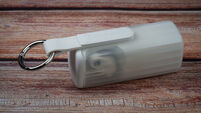Dangbei Mars projector: Laser brilliance for longevity and stunning image quality

Dangbei Mars Laser Projector. Pictures: Dangbei.
Projectors using laser technology offer several advantages over traditional lamp-based projectors. Firstly, lasers provide a more extended lifespan, ensuring years of reliable use without frequent bulb replacements. Laser projectors also deliver consistently bright and vibrant images, maintaining their image quality over time. They also offer instant on/off functionality, eliminating warm-up and cool-down periods. Laser light sources are highly energy-efficient, reducing power consumption and operating costs. Lastly, laser projectors are compact and lightweight, making them suitable for various applications, from home theatres to professional presentations, where portability and image quality are essential.
The Deingbei Mars projector uses a laser light source and native support for Netflix, Prime Video and YouTube.
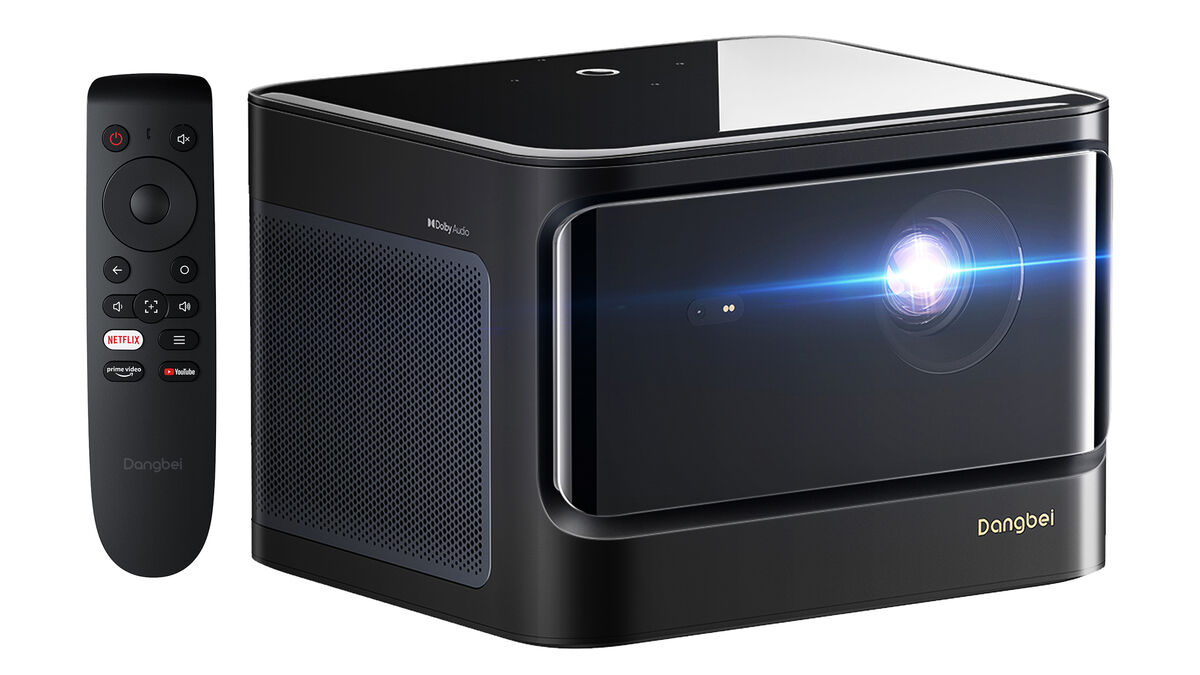
The Mars projector boasts a compact form factor housing an array of advanced technology. While smaller than lamp-based projectors, it weighs in at 4.5kg, making it less portable than smaller alternatives like the Dangbei Neo. The projector features four small rubber feet for stable placement on a coffee table and a tripod mount for versatility. Its design exudes a modern aesthetic, combining glossy and matte plastic elements.
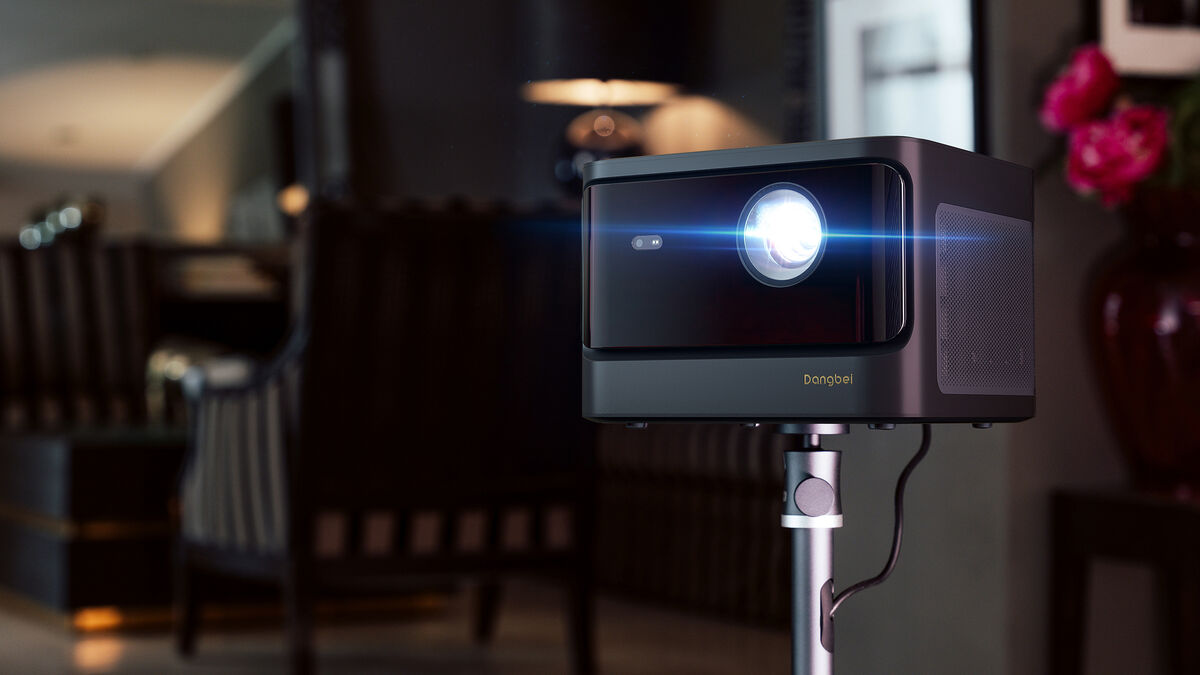
The Mars projector has preinstalled Netflix, YouTube, and Prime Video apps on its fast and smooth Linux-based operating system. It also includes Mirrocast for sharing content from your smartphone. However, it does not support AirPlay or Chromecast.
While an app store is available to add additional services, it doesn’t have any other streaming apps we’ve come to expect from dedicated streamers. If you need more than Netflix or Prime Video, you’ll have to consider supplementing the device with an Apple TV or Google TV, which can be connected to one of the two HDMI inputs at the rear of the machine. Additionally, two USB ports are for direct playback and a digital optical port for connecting an external speaker system.
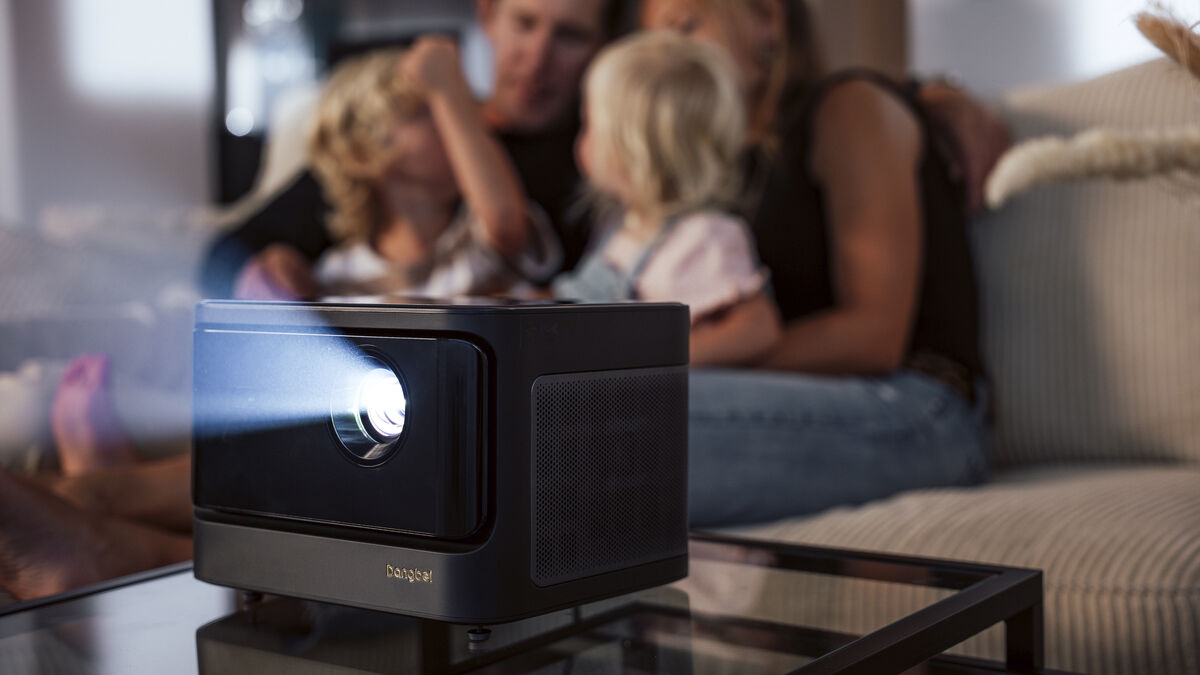
The Mars has comprehensive auto-adjustment, including six-way keystone correction, autofocus and obstacle avoidance. It all worked fairly flawlessly in my testing, adjusting the screen size and ensuring the image was nice and rectangular on my 100-inch projector screen.
After installing it on my ceiling mount, I did a fully manual setup, including keystone correction and focus. Once I was happy with the image, I turned off all of the auto features because otherwise, it would do an autofocus initiation each time I turned the projector on.
Because my ceiling mount is a fixed distance from my screen, I used the digital zoom on the Mars to reduce the image size.
The Mars projector merges DLP projection technology with a powerful high-brightness laser, delivering an impressive 1080p image with a peak brightness of 2100 ISO lumens, allowing for HDR10 and HLG content support.
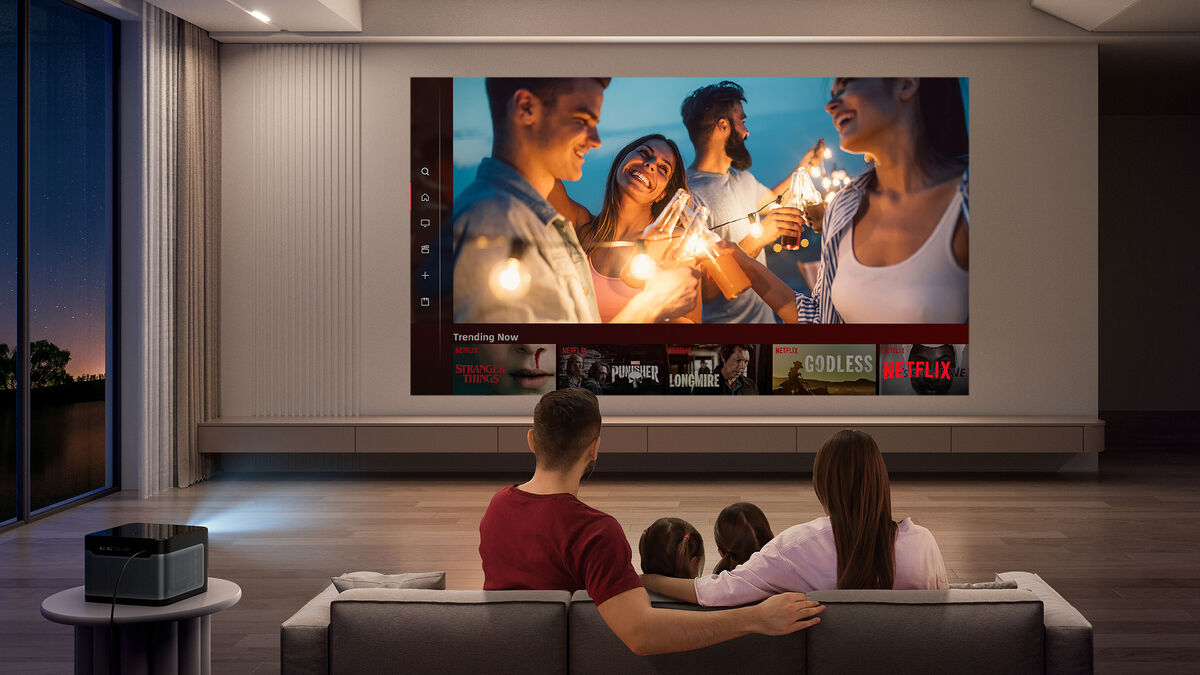
For optimal image quality from any projector, you need to control the light in your room; the darker, the better. However, thanks to the extra bright laser onboard, you can still get a decent viewing experience in a lit room. Even with my relatively inexpensive projector screen, I found colours were natural, and contrast was excellent out of the box without having to play around too much with the image settings. One option I frequently adjusted was the backlight intensity, which ranges from 0 to 10. In well-lit environments, I set it to the maximum at 10. However, when watching movies in a dark room, setting it to 6 provided the ideal balance, ensuring excellent contrast while preserving details in both shadows and highlights.
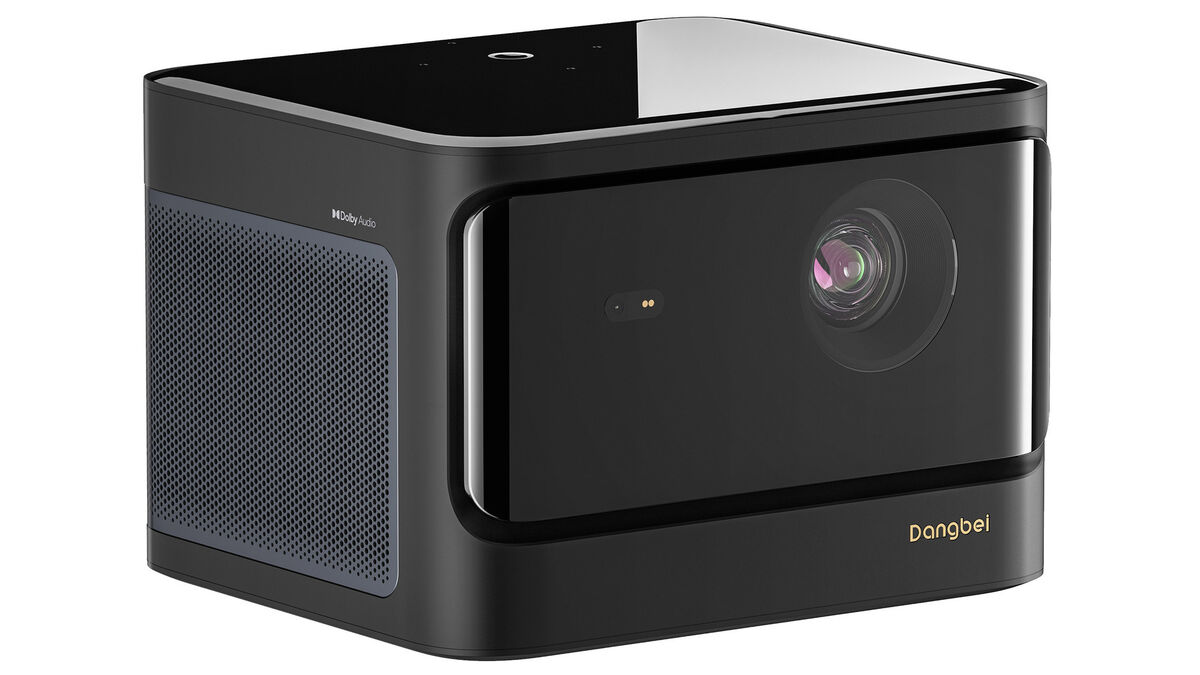
The only minor drawback I could find regarding image quality is a subtle hint of the rainbow effect. I observed it only occasionally, and it was pretty subtle. Other members of my household didn't detect it at all, but it is worth noting its presence. Overall, the image quality stands out due to its vibrant colours, impressive black levels, and crisp detailing.
Dangbei claims a remarkable latency of less than 20ms for the Mars projector, enhancing the gaming experience significantly. While fast-paced games like first-person shooters might be better suited for smaller screens, platformers, action games, and racing titles genuinely shine on the big 100-inch display.

The dual-integrated 10W speakers feature Dolby Digital Plus decoding, adding a layer of compatibility and clarity. They deliver a surprisingly impressive audio experience. While they may not match the performance of dedicated speakers or a high-end surround sound system, they provide respectable bass, impressive volume, and, most importantly, clear and distinct dialogue.
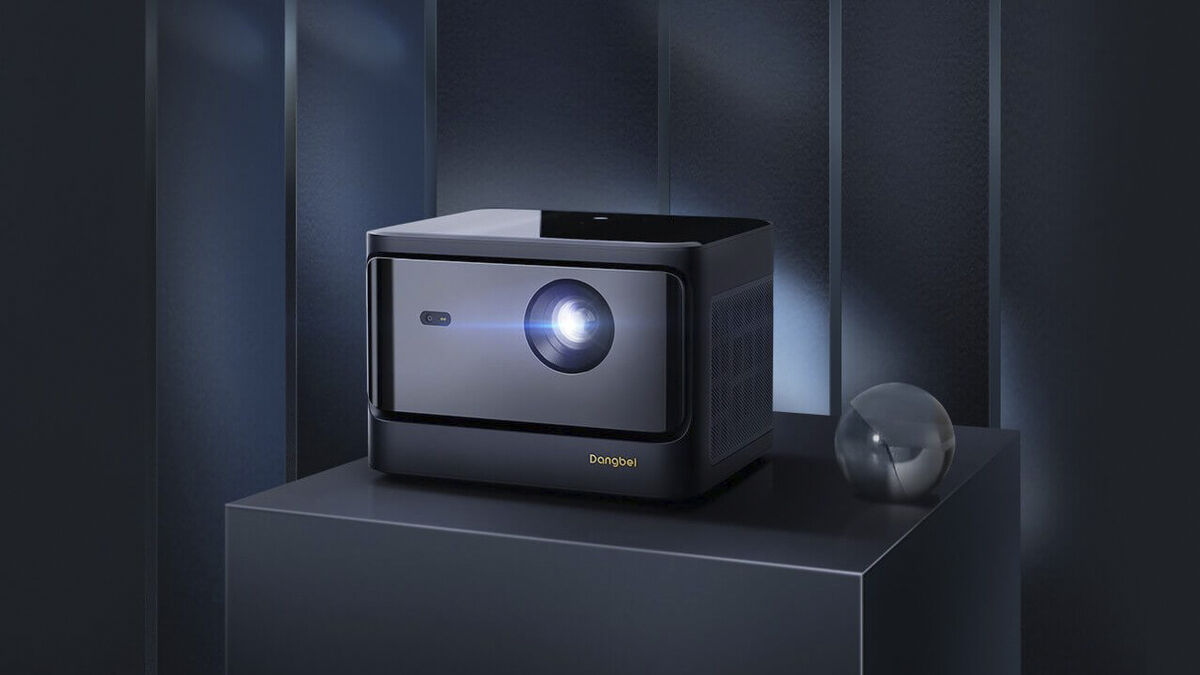
I used the HDMI ARC port to connect the projector to my soundbar using a long cable with no issues. I also tried out the built-in Bluetooth support, although audio synchronisation may vary depending on the speaker you connect. The projector's quiet fan operation is even more impressive, especially compared to traditional lamp-based projectors emitting a significant amount of heat.
The Dangbei Mars projector combines the benefits of laser technology with a sleek design, impressive image quality, and versatile features. While minor drawbacks like the absence of certain streaming apps and the occasional hint of the rainbow effect are worth noting, the Mars projector offers a compelling package for entertainment and professional use.
Dangbei Mars Laser Projector - €1,099 amazon.de




